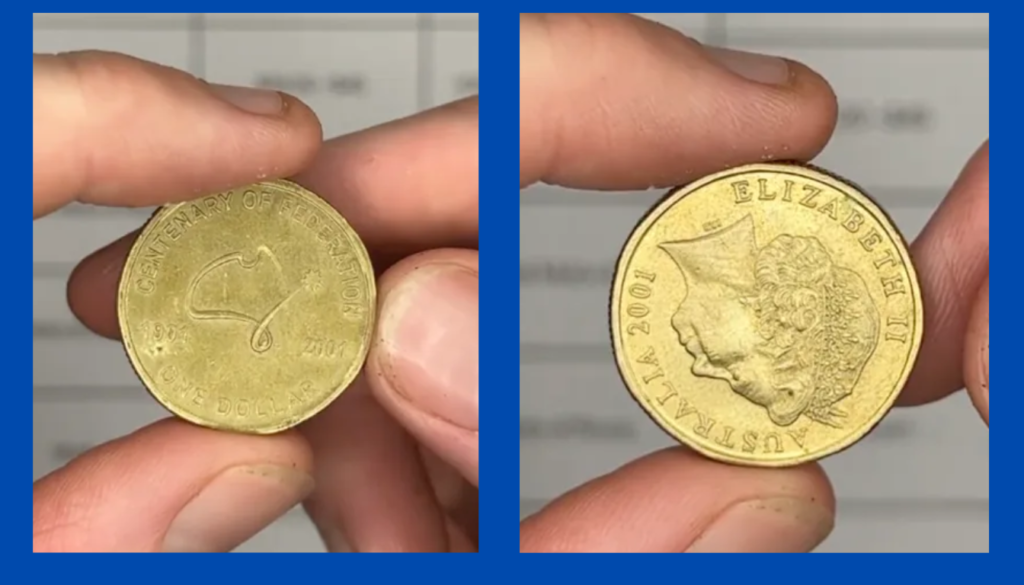A significant discovery in Australian numismatics has collectors and everyday Australians checking their change more carefully. According to coin experts, a specific error in the 2001 Centenary of Federation $1 coin could make it worth up to $350, far exceeding its face value.
Doug Mcrostie, founder of Coinxchange, recently highlighted this valuable error in an interview with Above the Law. The error, known as a “rotation error,” occurs when the images on the opposite sides of the coin are misaligned from their intended position. This manufacturing flaw has created a sought-after variety that collectors eagerly pursue.

“The error resulted from the die rotating during the manufacturing process,” Mcrostie explained. “This created multiple variations of rotations, rather than just a single 90-degree misalignment. Collectors often describe these rotations using clock positions, from 1 o’clock through to 12 o’clock, creating different variations of the same error.”
The coin in question was minted in 2001 to commemorate Australia’s 100th anniversary of federation. The Royal Australian Mint produced 27.9 million of these special coins, featuring an Australian map on one side and Queen Elizabeth II’s portrait on the other. While most of these coins were struck correctly, a small number experienced the rotation error during production.
The value of these error coins varies significantly based on their condition. According to Mcrostie, circulated specimens can fetch around $55, while well-preserved examples might command up to $350. “Coins that have been in circulation naturally show wear and tear, which affects their value,” he noted. “The better preserved the coin, the higher the price it can achieve in the collector market.”
What makes this error particularly interesting is its relative accessibility compared to other rare Australian coin varieties. Estimates suggest that up to 10,000 of these rotation error coins might exist, making them more attainable than other celebrated errors like the “alien error” or “wavy baseline” variants.
Mcrostie himself has experienced the thrill of discovering one of these error coins. “I found one during a casual coin-checking session while enjoying a glass of wine,” he shared. His discovery features a 7 o’clock rotation and is valued at approximately $60.
Among the rotation error variants, certain alignments are particularly prized by collectors. “The most sought-after examples are those where the Queen’s portrait is rotated to exactly 180 or 190 degrees,” Mcrostie explained. He also mentioned an impressive collection he’s encountered where one collector had assembled a complete “clock face” set, featuring coins with rotations corresponding to all 12 hour positions.
The phenomenon of rotation errors isn’t unique to the 2001 Federation dollar. Similar misalignments have been documented in other Australian coins, including the 2010 50-cent piece, 2001 20-cent coins, and even some 1966 5 and 10-cent pieces. This pattern of errors adds an interesting dimension to Australian numismatic history and provides multiple opportunities for collectors and careful observers to find valuable variants in their everyday change.
For those interested in seeking these valuable error coins, the key is to examine $1 coins from 2001 carefully. Check the alignment of the Australian map and Queen’s portrait by holding the coin vertically with one side up, then turning it over (not sideways) to see if the other side’s design is properly aligned. Any noticeable rotation from the standard alignment could indicate a valuable error variety.
This discovery serves as a reminder that valuable numismatic treasures can still be found in circulation, making the hobby of coin collecting both accessible and potentially rewarding for enthusiasts of all ages. It also highlights the importance of paying attention to the details of our everyday currency, as even small variations can sometimes lead to significant value increases in the collector market.
